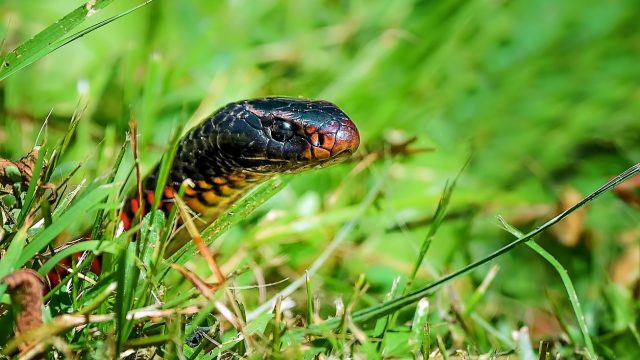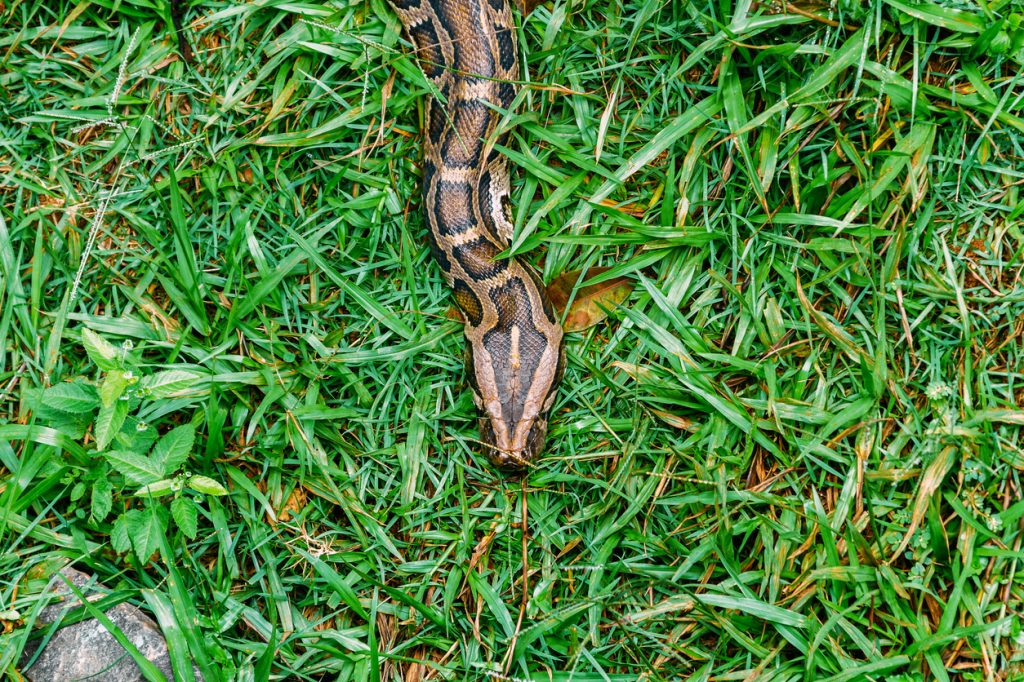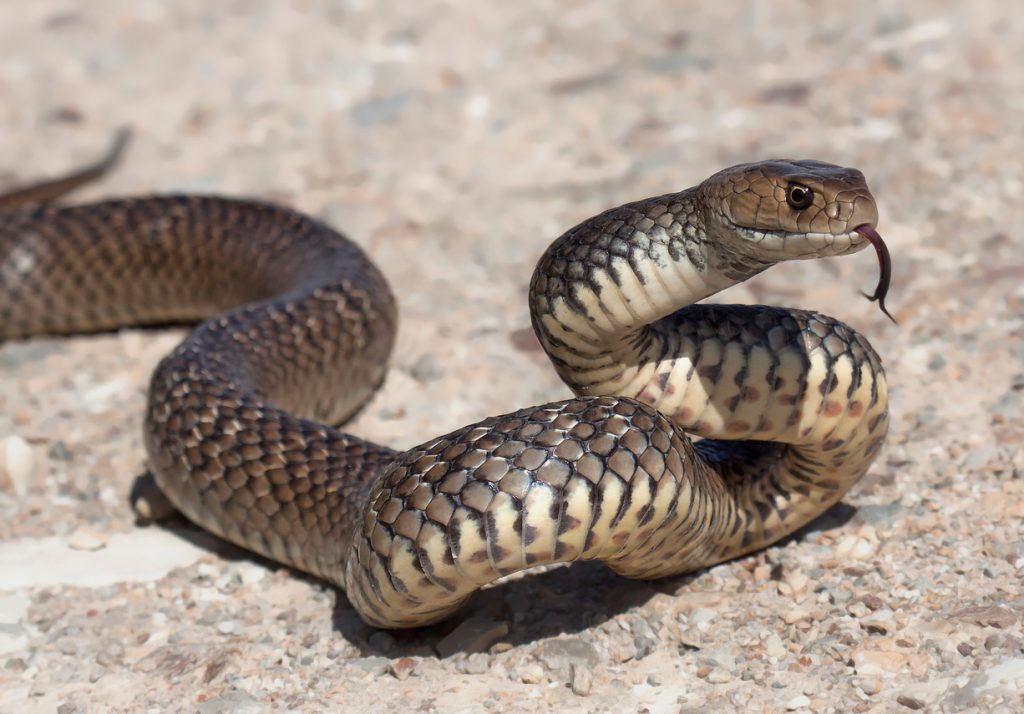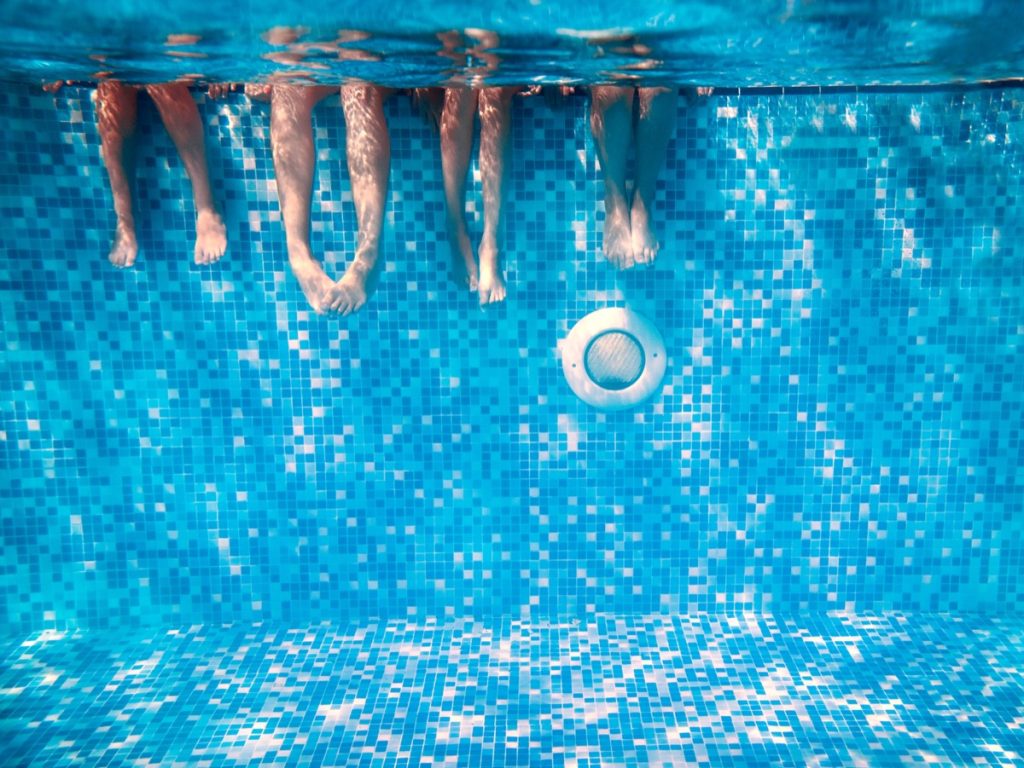Snakes Love to Hide Here—”Never Reach Into” This Spot, Expert Says

Even though many who fear them incorrectly believe they’re aggressive or inherently dangerous, snakes are actually best at keeping themselves out of your way by their very nature. But that’s not to say this habit won’t lead them to stash themselves away in all kinds of strange places they shouldn’t necessarily be. They can wind up in the corners of your attic or down in your basement. Some might find their way into main living areas like your kitchen—and they can even manage to slither into your bedroom in some cases. Fortunately, knowing where they’re more likely to be can make you less likely to be surprised by a stowed-away reptile. Read on to see which hiding spot snakes love that experts say you should “never reach into.”
READ THIS NEXT: If You Live Here, Watch Out for Escaped Snakes and Other Reptiles.
There are a few things that make a hiding place appealing to a snake.

It’s important to note that no matter where you live, it’s probably inevitable you’ll eventually come across a reptile in your yard at some point. But experts point out that they should be considered a welcome sign that your garden is thriving.
“Although they can be icky and frightening, most snakes are actually very beneficial to your home’s ecosystem,” Donnie Shelton, owner of Triangle Lawn Care in Raleigh, North Carolina, previously told Best Life. “If you notice a garter snake or a king snake, then these can actually be your garden’s biggest ally! Garter snakes eat slugs which can damage your plants, and king snakes will eat rodents as well as kill more dangerous venomous snakes such as copperheads!”
But whether you have a deep-rooted fear of reptiles or are worried a venomous snake could be a risk for your kids or pets, it’s always best to be aware of what exactly appeals to the reptiles. In many cases, the surprise factor of coming across one has to do with their innate ability to tuck themselves away.
“A favorite hiding spot for snakes is underneath objects like rocks, logs, and leaves. This helps them stay hidden and also keeps them protected,” experts from lawn care and pest control company The Turf Doctor previously told Best Life. “If you’re working in your yard and come across a snake, it’s likely that it’s normally hiding underneath something nearby.”
Experts caution that you should “never reach into” one specific hiding spot that snakes love.

But while natural overgrowth and lawn elements are an excellent reason to keep your eyes peeled for reptiles in general, experts caution there’s one specific place that’s particularly risky. In a viral video posted to TikTok in August with nearly 867,000 likes, professional snake wrangler @sdsnakeadventures2 recorded himself responding to a call he received.
“Got a call from a guy swimming this morning in a community pool who says he saw a snake in a pool trap—and I have found them here before,” he says on the video while approaching a skimmer filter. When he removes its cover, he soon realizes there are even more reptiles around than initially thought—and they’re venomous.
“Two different types of rattlesnakes in one pool trap,” he says, identifying them as Southern Pacific and red diamond rattlesnakes. He then carefully uses a tool to remove the small serpents safely and places them in a bucket so they can be relocated and released without harming them.
The user points out that the pool skimmer filter can be a common place to find them. “A good reminder not to reach into the pool trap,” he wrote in the caption.
RELATED: For more up-to-date information, sign up for our daily newsletter.
The snake wrangler who posted the video says he finds them in pools “often.”

Since it was posted, the video has generated nearly 4,000 comments from users applauding the account’s owner for safely removing the snakes from the pool trap while also expressing fear of finding one in their own swimming area. In one reply, he admitted that he’s called in for snakes in pools “often,” even though he’s never found one in his own. But one user shared a close encounter of their own that proves how risky of a hiding spot it can be.
“I almost was bit by a copperhead that way,” one user commented. “I reached in to get the leaves. Pulled my hand out and notice it around the edge. Praise God he didn’t bite.”
“It does happen,” the video’s creator replied.
Unfortunately, experts point out that pools can be a big draw for reptiles, making them a challenging area of the home to patrol. Snakes are attracted to the large body of water as a potential hydration source, sometimes even sensing it from a significant distance away, according to experts at Wildlife-Removal.com. They will then get in the water to drink or cool off with a swim before realizing the pool lip makes it impossible for them to exit. Eventually, the snakes will drown from exhaustion or find their way into the pool trap filter.
You can do a few things to reduce your chances of finding snakes in your pool trap filter.

Keeping snakes out of your pool entirely can be an uphill battle. But while experts say there’s no foolproof solution, there are a few simple steps you can take to cut down on the risk of them taking a dip.
Even though it may not be directly in your pool area, staying on top of your lawn is often essential. “If you have tall grass in your yard, there’s a good chance that snakes will start to frequent the area,” Craig Zeigler, owner of Agronomic Lawn Management, previously told Best Life. “They’re known for being attracted to it because it provides them with cover and makes it easier for them to hunt prey. If you have a snake problem in your yard, the best thing to do is to cut down the grass and remove any other potential hiding spots.”
However, there are other more direct approaches you can take as well. Since most states require a perimeter fence around all pools as a safety precaution, you can easily install one that’s solid and flush with the ground to keep out snakes, the experts at Wildlife-Removal.com suggest. You can also make it harder for them to get trapped by covering your pool at night. And similar to overgrown grass, low-lying shrubs and flowerbeds near the water can provide the kind of cover reptiles love. By trimming it back or removing it, you’ll lower the likelihood snakes will end up in your pool trap filter.